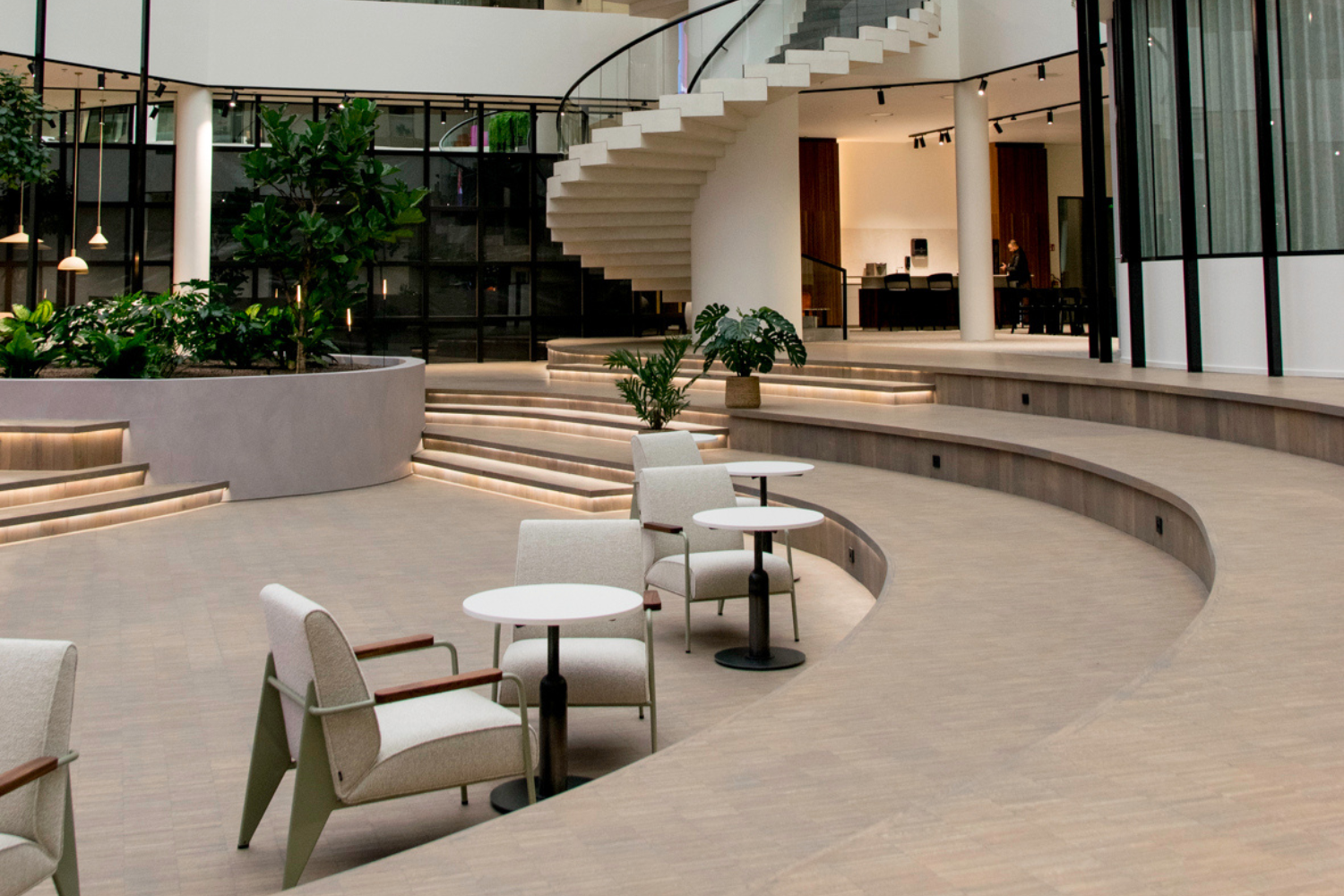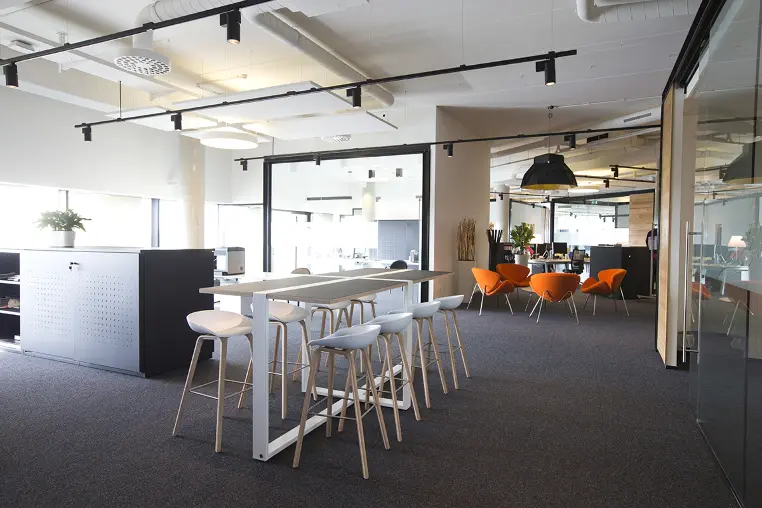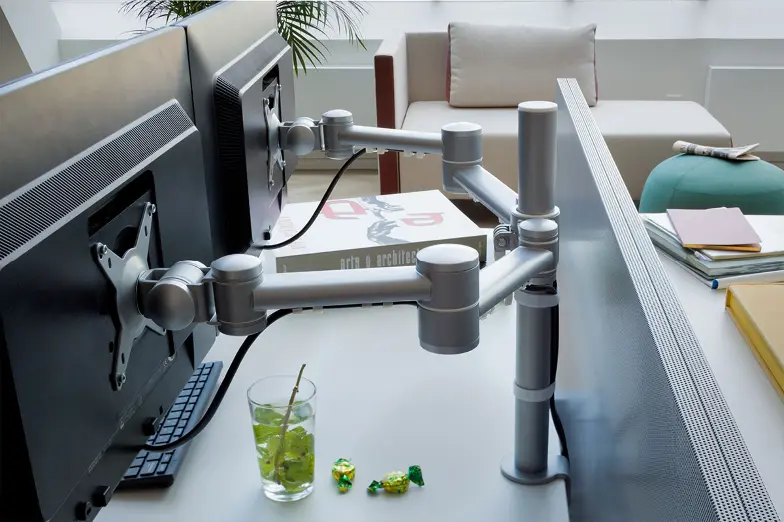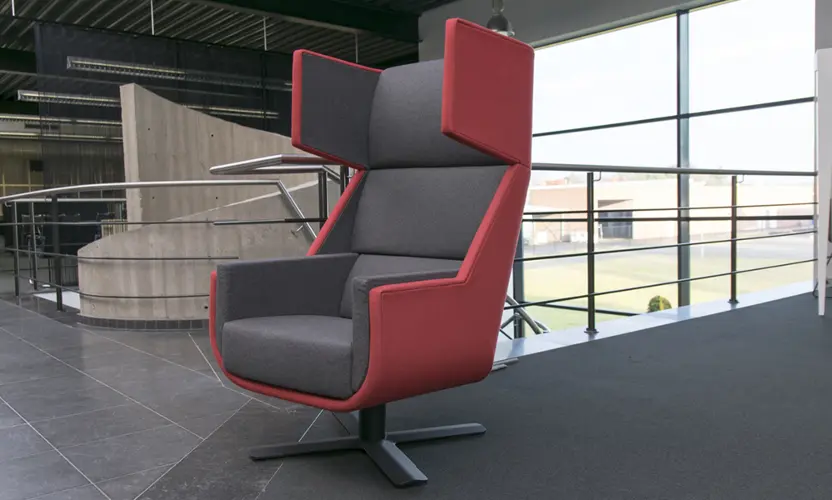
Office trends of 2025: smarter, more sustainable, and more social
16/01/2025
The trends we see in office design are not just aesthetic changes, but reflect the shift in work habits and societal values. The office in 2025? This is smarter, more sustainable, and more social. Offices that not only meet the needs of employees, but also benefit the environment and society. In this blog, we take a closer look at these trends and discover how they will further define the workplace of the future.
Smart technologies for an efficient workplace
The trend of smarter working is all about making the use of the working environment more efficient while promoting employee well-being and convenience. The integration of IoT and AI will allow companies to create intelligent, responsive environments that optimise work processes by 2025.
- Seamless cooperation: Meeting rooms, acoustic cubes, and phone boxes will be equipped with built-in technologies that increase the efficiency of hybrid meetings. So-called Zoom rooms offer employees a way to meet virtually with clients and colleagues in a more professional environment than their home office. From automatic system settings to video conferencing systems and interactive screens that work seamlessly, the technology will improve interaction between hybrid employees and increase productivity.
- Smart storage solutions: Smart lockers are becoming more common – especially in hybrid working models. With these storage systems, you can reserve a locker in advance, safely store your personal belongings in it, and gain access without blocking physical space. This reduces the need for fixed workstations and allows for flexible work arrangements.
- Smart office technology: Things like occupancy sensors, apps for space or workplace bookings, smart LED lighting, digital signage… Offices will use artificial intelligence to analyse this big data on space usage and employee behaviour. For example, AI can predict which rooms are used most often and, based on that, the layout can be dynamically adjusted. This means that the workplace is optimally utilised at all times, which increases space utilisation.
Sustainability, from words to deeds
Attention to sustainability will no longer be an option, but a requirement for office design. This is supported by the entrance of CSRD legislation. Sustainability can also have a surprisingly large impact on a company’s ability to attract and retain talent. A 2023 report shows that 90% of office workers believe a sustainable workplace is good for people and the environment, with 34% considering a sustainable office a “must have”.
- Sustainable, circular materials: More and more companies are opting for circular furniture designed with longevity and end-of-life reusability in mind. As an office interior designer and manufacturer, we see it as an opportunity to innovate and grow. Instead of viewing sustainability rules as a burdensome compulsory act, it acts as an engine for innovation at Pami. Recent examples include our collaboration with Triboo, with the #GREENGRIDZ desk and table tops, and Colossus Printers’ large-scale 3D printing technology.
- Lighting and climate control: Smart, energy-efficient technologies, as cited above, will also do their bit to make offices more sustainable. LED lighting, sensors that optimise the use of heating and cooling, and automated systems that adjust lighting and temperature based on room occupancy are just a few examples.
- Modular and flexible designs: The use of modular and flexible designs helps adapt workplaces to changing needs, without the need for constant new furniture or major renovations. Moveable walls, acoustic partitions, and multifunctional, modular furniture offer the flexibility to adapt spaces quickly. This design approach empowers workers and responds to the natural ebb and flow of office work. Spaces can be adapted to changing team dynamics and needs, resulting in less wastage of materials and cost savings.
Collaboration, corporate culture, and well-being
An office continues to evolve into an environment suitable not only for productive work, but also for social interaction and relaxation – for all employees.
- Wellness and corporate culture: In their attempt to make the office more attractive, some organisations are blurring the line between work and leisure. Work and leisure need not be mutually exclusive. A coffee bar at reception creates a warm first impression for both staff and visitors. It offers workers a place to stop and socialise. Cafeterias are another trendy option in the modern workplace. Comfortable sofas, informal furniture, and lounge chairs provide opportunities for both informal work discussions and concentrated work. They can also serve as a setting for customer meetings. Collaborative spaces help build social bonds. By combining work, leisure, and recovery, the modern office aims to be an all-encompassing environment that supports innovation and nurtures corporate culture. Companies competing for the best and brightest in the knowledge economy must be able to provide a comfortable environment where employees can get the best out of themselves. Mocha Mousse, the colour of 2025 according to Pantone, fits this trend perfectly. Pantone describes the colour as a warming, brown hue that reflects the global need for connection, comfort, and harmony.
- Healthy workplaces: The workplace of 2025 is also about the physical and mental health and well-being of employees. This means not only ergonomic desks, quiet areas for relaxation, and facilities that encourage movement, but biophilic design will also play a big part in this. This office design trend consists of maximising natural light, greenery, organic patterns, and natural materials. Moss walls, green courtyards, plants, and nature-inspired artworks are just some of the biophilic elements incorporated into the working environment. Research shows that biophilic design increases employee productivity, creativity, well-being, and satisfaction. It taps into our innate human connection to the natural world. For companies looking to create a vibrant, inspiring workspace, a biophilic design also allows for unique branding and aesthetics.
- Inclusiveness and diversity: There is a rising trend in awareness of the diverse needs of the workforce. Companies try to attract and retain talent by showing that they are committed to making every employee happy. So when it comes to office design, one size does not fit all. An inclusive office space accepts the diverse needs of all users – from the youngest to the oldest, through all levels of ability and disability, and that embraces all backgrounds of gender, sexual orientation, ethnicity, culture, and religion. In fact, according to a McKinsey study, organisations that prioritise inclusiveness are 35% more likely to be financially successful.
Is your office ready for 2025?
Have you been thinking about how your office can adapt to these changes? We are happy to help you answer any questions you may have.
Contact us today and find out how we can support you in creating a smarter, more sustainable, and more social workplace.



